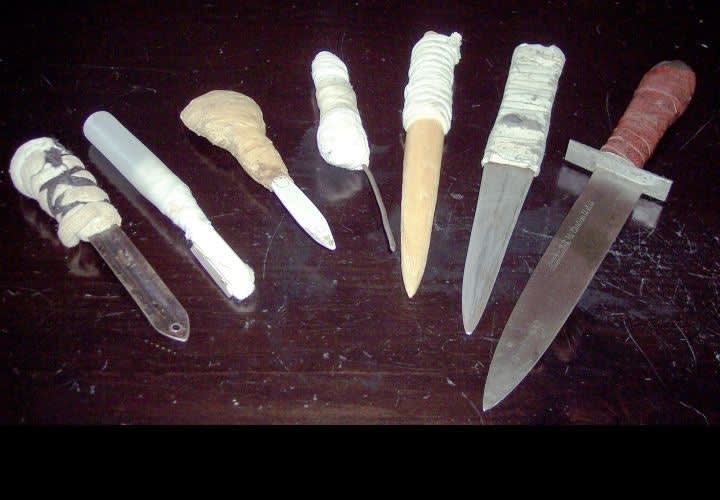Killing another human being with a knife is not like shooting someone with a firearm, whcih can be used at a distance and provides the shooter with a certain amount of disassociation. Unless the victim is shooting back, the attacker remains relatively clean.
Killing with an edged weapon
is very different.
The single knife thrust that cleanly and quietly dispatches the enemy sentry in a Hollywood movie is pure fiction. Closing and attacking another person with a knife in mortal hand to hand combat is a brutal and bloody task.
The human body is surprisingly durable and resilient, capable of absorbing and surviving for some time through multiple stabs, slashes, trauma and blood loss. The survival instinct and adrenalin willpower even the weakest victim to fight back. Blood will spurt and spray on the attacker and surrounding environment making the weapon and the flooring wet and slippery. In such a life and death struggle, it's common for the attacker also to be injured by his own weapon. When the victim's chest and torso are punctured, air escapes with a disturbing sound. Not everyone is capable of killing others with an edged weapon, but some men learn to love it. These men are dangerous.
Although no law enforcement officers were killed by edged weapons in 2010, many were injured. Nine officers were killed between 2000 and 2009 by edged weapons. Unless your ballistic vest is especially made to resist knife thrusts, it won't prevent a knife from penetrating your torso. Even if you wear a protective vest, your neck and major arteries are still vulnerable.
Gangs formed by members recruited from ethnic cultures in which edged weapons are traditional, present a special problem for gang cops. Santa Nas, Pinoy Real (pronounced Re-AL), and Bahala Na, draw their members from the Filipino culture. Many members have Filipino stick and knife fighting training. Central American, Caribbean and South American cultures have long histories and traditions with edged weapons, especially the machete. Jamaican, Dominican, Puerto Rican and El Salvadorian gangs especially have adopted machetes as their signature weapon.












